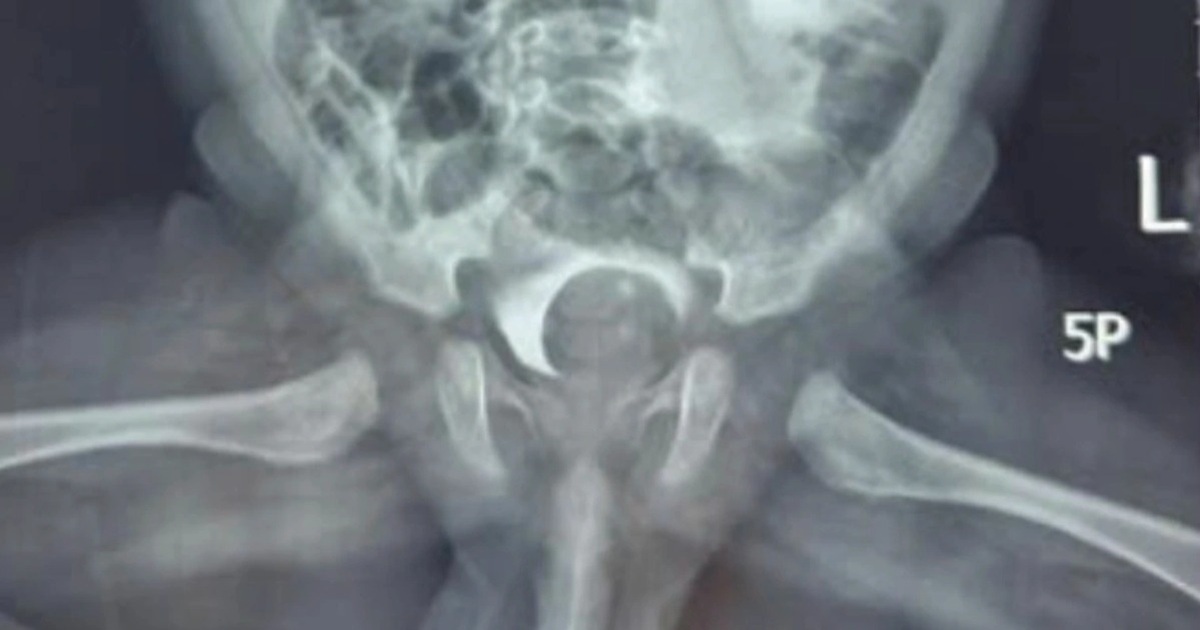On January 24, Dr. Pham Ngoc Thach, Deputy Director of Children’s Hospital 2 in Ho Chi Minh City, announced a successful special treatment for a 1-month-old boy suffering from congenital urinary tract anomalies. This was the first time the hospital applied a new surgical technique, achieving outstanding results.
Previously, during pregnancy, local doctors detected abnormalities in the fetus’s urinary system. Diagnoses revealed bilateral renal agenesis with hydroureteronephrosis but no damage to the ureters or bladder. After a normal vaginal delivery, the baby exhibited concerning symptoms such as difficulty urinating, cloudy urine with greenish pus and rice-like particles. When the condition worsened with high fever, refusal to feed, and severe urinary tract infections, the family brought him to Children’s Hospital 2 for treatment.
Diagnosis and Breakthrough Treatment Method
After examination and screening, doctors diagnosed the baby with bilateral ureterovesical junction obstruction, leading to severe hydronephrosis. Notably, an enormous ureterocele occupied nearly the entire bladder, causing obstruction and severely impacting kidney function.
Initially, the medical team used endoscopic procedures to address the blockage. However, due to the large size and high mobility of the ureterocele, the procedure became extremely challenging. The risk of ureteral and bladder injury increased significantly with traditional approaches.
To solve this issue, the doctors innovated a new method. After identifying the ureterocele via endoscopy, they inserted a small needle through the skin over the pubic bone into the bladder. A tiny clip was then placed to stabilize the anterior wall of the ureterocele, ensuring precise and safe treatment.
Treatment Outcomes and Significance of the New Method
Post-surgery, the baby’s infection improved significantly, and kidney function stabilized. Within five days of treatment, he was discharged in good health, feeding normally, and without any surgical scars. This method not only minimizes risks but also shortens recovery time, providing maximum benefits for the patient.
According to Dr. Thach, the new technique has several advantages over traditional methods. Using the stabilizing clip avoids vascular injury and posterior wall damage, ensuring high precision in the procedure. Additionally, patients only need a urinary catheter for monitoring and can be discharged after 1-2 days if stable.
Statistics and Warnings
Statistics from Children’s Hospital 2 show that approximately 12-15 cases of ureterocele are admitted each year. This condition often accompanies bilateral renal-ureteral malformations and, if not detected early, can lead to serious complications like recurrent infections, ureteral stones, renal fibrosis, and even permanent kidney dysfunction.
The method of inserting a small needle through the skin over the pubic bone is a breakthrough in treating ureteroceles, especially for severe and complex cases. It not only provides high efficacy but is also less invasive and reduces complication risks.
Conclusion
The successful surgery at Children’s Hospital 2 not only saved one infant from a life-threatening condition but also marked a significant advancement in pediatric medicine in Vietnam. Parents should pay attention to unusual signs in newborns, particularly related to the urinary system, for timely intervention and treatment. Be proactive in prenatal screenings and follow your doctor’s advice to safeguard your child’s health.
Source: Dan Tri Newspaper



